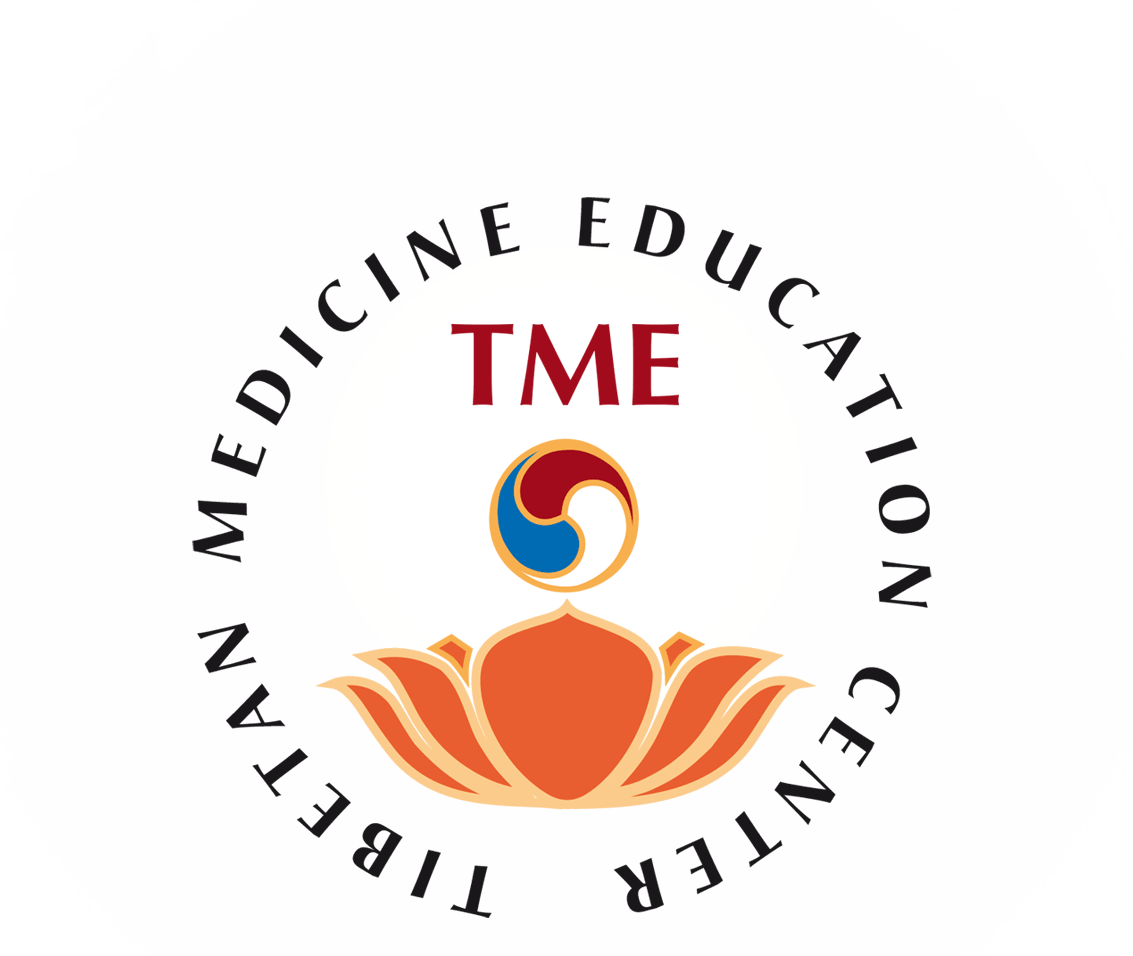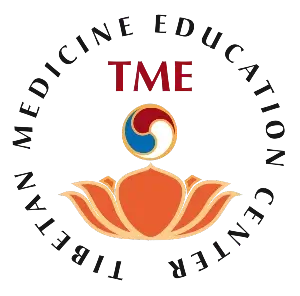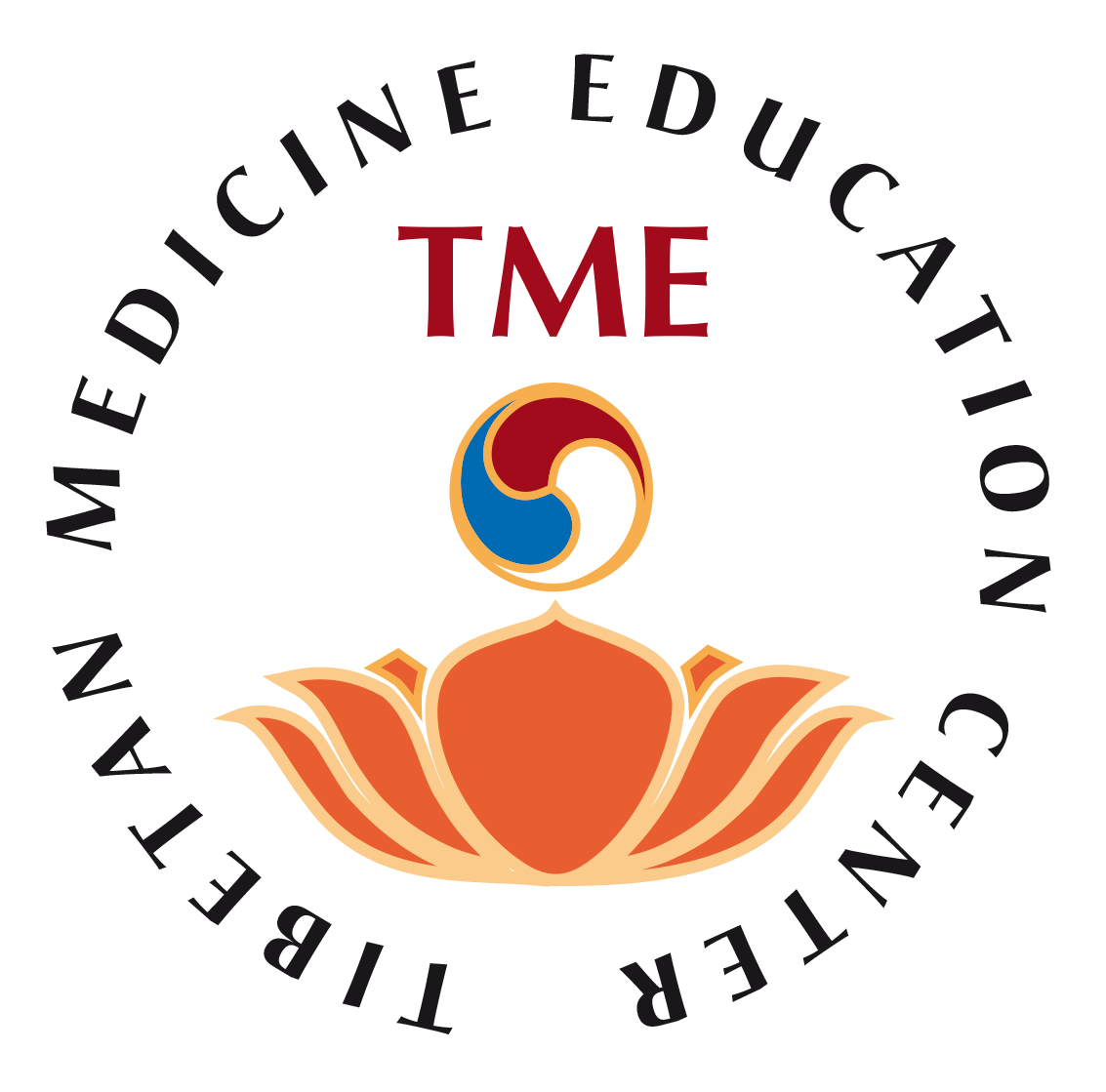Buddhism and Medicine
The Golden Sutra

From “The Essentials of Gyud-shi”, Dr Pasang Yonten Arya
Buddha’s direct teaching on Medicine
When Buddha Shakyamuni visited Girja Kuti (Vultures’ Peak) to teach the ‘great hearers’ or sublime audience of monks, nuns, Bodhisattvas, gods and spirits, he expounded, in his last turning of the wheel of Dharma, the ‘King of Glorious Sutras called ‘The Exalted Sublime Golden Light‘, or in short ‘The Golden Sutra‘ (mdosde gser-od-dampa: Ārya Suvarõaprabhàsottamasåtrendraràjamahàyànasåtra). The 24th chapter of the sutra is titled: The ‘sutra to pacify all diseases’ (Ned-rabtu-zhiwar-byedpa: healing illness) [1]. In it, Buddha tells the Goddess Bodhisattva, Rig-kyi Lhamo about one of his previous lives and about how he learned the art of healing from his father: “Countless eons ago, a Buddha called Rinchen Tsugphud-chen came to this world. During his time, there was a rich merchant with the name of Tshongpon Chuzin, who was also an expert in the eight medicine branches. He treated many patients and saved many lives in that country. He had a son called Chubeb (Jalavahana), who was handsome, good hearted, intelligent, well learned and an expert in script, art, astrology and grammar. He was much beloved by his people. At that time, an epidemic broke out and thousands of people died. The merchant’s son, Chubeb, was distressed and compassion for them arose in his heart. He thought that his elderly father was not able to perform many treatments because he was aged and weak. So he became determined to learn the art of healing from his father. He went to him and, prostrating before him, said in verse [2]:
“To save the life of other beings
I’m keen to ask you, beloved father
With your loving-compassion
Please teach me the art of medicine”
The father replied in these verses:
“I shall teach you series by series
Based on the healing science
Derived from the essence of Cikitsa vidya of Rishi,
Listen carefully and learn to protect beings”.
Three months are called spring
Three months are called summer,
Three months are called autumn and
Three months are called winter.
This is one year
The three months in each seasons are described,
Two months periods are called Dustshigs[3]
So there are six dustshigs in one year.
The first two months are the time of flowering
Three and four are the hot season
Five and six are the rainy season
Seven and eight are autumn
Nine and ten are the cold season
The last two are the snow time
By knowing the different seasons
You will learn to administer medicine without mistake.
By prescribing food and beverage
According to the law of seasons
Digestion will be smooth and
Will not produce diseases.
If the dustshigs become distorted
And the four elements are changed,
If the body remains without proper medication
It will suffer from disease.
Therefore the physician should know
The four seasons and the six dustshigs, too
And he should know the nature of the body [4]
Then, he will be able to administer diet and medicine without mistake.
If disease has entered in through the nature of taste[5]
Into the blood, muscles, bones, bone marrow and brain
The physician should know [according to] the signs and symptoms
If the disease is curable or not.
Diseases are of four different types
rLung, Tripa, Badken and
Totally combined in one.[6]
One should know the manifestation time.
Phlegm manifests in spring
Summer increases Wind[7]
Bile manifests in autumn
All three manifest in winter.
Admit pungent, rough, and warm taste and quality in the spring
Oily and warm quality and salty taste in the summer
Cooling, sweet and oily quality in the autumn and
Rough, oily quality and sour, sweet tastes in the winter.
During these four seasons
If medication, diet and beverages
Are followed according to the seasonal law
No disease will be produced.
Pain [manifesting] after meal indicates Phlegm disorder
And during the digestion, indicates Bile
After the food digestion, it is a Wind disorder
One should know the time and symptoms in parallel.
Knowing the root of the disease [8]
Administer the medicine accordingly,
Despite the different disease characters and sub-types
One should reveal the origin of disease.
Administer oily medicine for Wind disorders
Purgatives are better for Bile.
For Phlegm, one should apply emetics
And Combined [disorders] need all three medicines.
Combined means that the three humors
Equally manifest their symptoms.
One should know the time of diseases’ manifestation
But also the [patient’s] constitution
Thus, by learning through examination
By treating the patient at the right time
By medicine, therapy, diet and beverage
By [Giving] advice without being mistaken
We know he is a wise physician.
Knowing the eight branches of medicine
Is the synthesis of all medical sciences
Enrich your knowledge of medicine
And cure the disease of the sentient beings.
(1.) Bloodletting and (2.) wounds
(3.) Physical diseases and (4.) Evil spirits
(5.) Poisons and (6.) Pediatrics
(7.) Rejuvenation and (8.) Geriatrics.
Diagnose the person’s color before
And observe the [patient’s] words (symptoms)
Ask about his dreams after that
You will know the three humors and their differences.
Thin, skinny, poor hair
And having an unstable mind
Talkative and dreaming of flying
Indicates a Wind constitution.
Grey hair growing to the adult
Much sweating and diarrhea,
Intelligent and dreaming of fire
Indicates a Bile constitution.
Stable mind and a large straight body
Assiduous, with an oily and wet head and body,
Dreams of water and white objects
Indicates a Phlegm constitution.
The three humors produce all the combined constitutions
Some are double and triple constitutions
If there are more constitutional characters
One should understand the dominant constitution.
After knowing the right constitution
Administer the medicine for the disease.
If there are no dying prognostication signs
The patient is curable.
[Patient’s] Eye perceives wrongly
Humiliating the master and physician,
Being angry with the relatives
It is a prognostication of dying.
Left eye becoming white
Tongue becoming black and nose turning to one side
Ear becoming bluish
Falling lips are sign of dying.
The single Terminalia chebula
Possesses the six tastes
Cures all diseases
It is harmless and the king of medicine.
Three fruits [9] and three hot medicines [10]
Easy to find among the medicines
Molasses, honey, milk and butter
Can cure many disorders.
The other medicines
Administer according to the disease
First cultivate love and compassion
And do not look to wealth and benefit.
Thus I’ve told you how to heal disease
This precious teaching is the synthesis of medicine.”[11]
Then Chubeb became an expert in the art of the healing, and cured many people.”
According to Desid Sangye Gyatso, after the sutra was expounded, Buddha may have actually taught the Gyud-shi to his disciples. [12]
……………………………………………………..
- [1] Quotation from the Tibetan translation of the Chinese version of ‘The Golden sutra‘ described in Desid Sangye Gyatso’s ‘khogs’bugs page 45-50 Kansu, China 1982. It roughly corresponds to the 16th chapter of the Yeshede’s translation of the Indian version. Differences in the texts may be found between the two versions.
- [2] These verses are translated by the author based on the Desid Sangye Gyatso’s ‘Khog’bugsdrangsrong gyespaidga’ston Publ. by people’s publication Kansu, China 1982, page 47-50
- [3] Dustshigs means joints of time, see more in the Etiology chapter.
- [4] Seven body constituents of food essence (chyle), blood, muscles, fat, bone, bone marrow and reproductive fluids.
- [5] ‘Chyle’ means food essence
- [6] Wind, Bile, Phlegm equally combined are called Brown Phlegm Badken smugpo in Tibetan medicine.
- [7] Monsoon season
- [8] Seasons and humors
- [9] Terminalia Chebula, Terminalia belerica and Emblica officinalis
- [10] Ginger, Piper longum and Piper nigrum
- [11] This is the heart of Tibetan medicine, theoretically and practically. It could be the base of Buddhist medicine.
- [12] Desid Sangye Gyatso’s Khog’bugs-legsbshad-drangsrong-gyespeidgahston P.53-64 Kansu China 1982. Some other scholars have different opinions about this.



